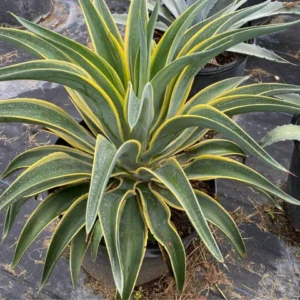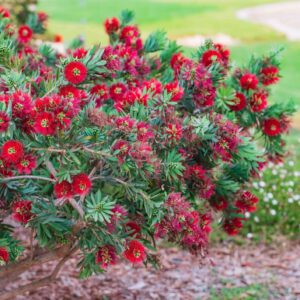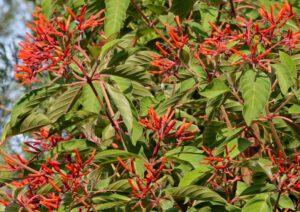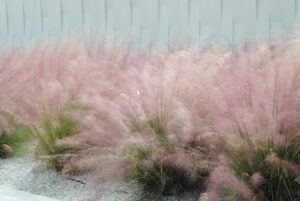South Florida, with its beautiful coastlines and balmy climate, offers an ideal environment for gardeners who love lush landscapes. However, the salty air and occasional sea spray can pose challenges for many plants. Fortunately, there are a variety of salt-tolerant plants that not only survive but thrive in these conditions, making them perfect for coastal gardens in South Florida.
Understanding Salt Tolerance
Salt-tolerant plants have adapted to thrive in environments where salt is prevalent. These plants can absorb and manage the salt content without it being harmful to their growth. For gardeners in South Florida, choosing these resilient species ensures a thriving garden despite the coastal challenges.
Agaves – grow in both tropical and desert areas. These succulents have a large rosette of thick, fleshy leaves. The leaves can be up to 10 feet long, with sharp points. Agaves grow slowly and flower only once, typically after at least ten years. When the plant begins to flower, a tall stem grows from the center of the leaves, bearing a large number of short tubular flowers.
After an agave blooms, it will die but can be easily propagated from plantlets at the stem’s base. The sap from many agave can cause skin irritation. When working with one, wear gloves and handle with care. Agaves need very little water once established and are a good pick for the Florida-Friendly landscape, being both drought-tolerant and often salt-tolerant, too.
Agave Desmettiana––variegated

Bottlebrush Plant – is a must for gardeners looking to attract hummingbirds and butterflies. Named for its distinctive flowers, this evergreen has bright red flower spikes that are reminiscent of a bottle washer. The bottlebrush is often sold as a shrub but can grow as a tree up to 25 feet in height. With patience, it can even be trained as an espalier.
There is an upright species and one that has a weeping form. The upright type can also make a nice screen or unclipped hedge. Bottlebrush will thrive in full sun and can adapt to a variety of soils. It’s a very drought- and salt-tolerant plant. Suckers on the trunk should be removed periodically if a tree form is desired. There is also a dwarf variety.
Bottlebrush

Beach Sunflower – a spreading perennial plant that also reseeds, creating a larger clump over time. It blooms almost year-round with two-inch, daisy- or sunflower-like flowers that have yellow petals and brown centers. Because of their year-round flowering, these plants can be especially good for brightening up the landscape during the warm and cool temperature extremes during the year.
It should be noted that in areas with freezing temperatures beach sunflower is an annual, but it will generally reseed itself. Another feature of beach sunflowers is their ability to attract wildlife; several species of butterflies appreciate the flowers and the fruits attract birds.
Beach Sunflower

Coontie – cycad (Zamia integrifolia) looks like a small fern, and is typically one to three feet tall. It has stiff, glossy, featherlike leaves attached to a thick, short, underground stem.
Because of its high drought tolerance and moderate salt tolerance, Coontie is an excellent choice for the coastal landscape. And it’s cold hardy, too. Coonties can be planted in sun or shade and can be used as a specimen plant or in foundation and massed plantings throughout the state.
Coontie

Firebush – is a perennial or semi-woody shrub that is known scientifically as Hamelia patens. Gardeners love firebush because it produces flowers from late spring until the first frost, and the bright red flowers attract hummingbirds and butterflies, including the zebra longwing and gulf fritillary butterflies. Songbirds also like to feed on the berries. The plant’s mature size will depend on where it is grown. In South Florida, it may reach fifteen feet tall, though it can easily be kept to five or eight feet tall. It works well in hedges, mixed borders, or as a stand-alone shrub.
It is also a great plant because it is heat and drought-tolerant once established, can grow in a range of soils, and has no serious insect or disease problems. Dwarf firebush (Hamelia patens var. glabra) is a related plant that is shorter, produces lighter-colored flowers, has smoother leaves, and is not native. Nurseries will sometimes sell these same plants under the name Hamelia patens ‘Dwarf’ or ‘Compacta.’ There is also a new cultivar called H. patens ‘Firefly’ that has leaves and flowers that are about half the normal size.
Firebush

Indian Hawthorn – If you’re looking for the right shrub for a small space, try using Indian Hawthorn. This slow-growing, petite shrub is perfect in foundation plantings or in the foreground of larger landscape beds. Plus, its white or pink flowers and evergreen foliage make it an attractive choice for many yards.
This Florida-friendly plant needs little care after it’s established. Plant yours in a spot that receives full sun. Space your plants at least eighteen inches apart to ensure that they’ll have good air circulation since this can also help limit disease problems.
Indian Hawthorn

Black-Eyed Susan – easy to grow and tough as nails, they are a sunny-colored wildflower that is salt- and drought-tolerant, making it an excellent choice for coastal landscapes. One of the nine Rudbeckia species native to Florida, black-eyed Susan is the most commonly grown of the species in landscapes and is perfect for butterfly gardens.
The plant forms a mound of foliage topped with a bright display of flowers characterized by brown centers surrounded by red, orange, yellow, or golden petals. Deadhead, or remove faded blossoms to prompt more profuse blooming. Black-eyed Susans also make great cut flowers.
Black-eyed Susan

Muhly Grass – is naturally found in Florida’s pine flatwoods, coastal uplands, and even along its highways, but it is also a popular choice in home and commercial landscapes. Known scientifically as Muhlenbergia capillaris, this easy-to-grow ornamental grass produces clumps that can reach 2 to 3 feet tall and up to 3 feet wide when mature. In fall, muhly grass produces fluffy pink to purple flower stalks that can reach up to 5 feet tall and give the plant a distinctive and attractive appearance.
A lovely white-flowering form is also available. Garden designers often plant muhly grass in large groups for a stunning visual effect, especially when the flowers are backlit in the late afternoon. Muhly grass looks good in the garden even after the flower stalks fade, thanks to its slender, dark green foliage.
Muhly Grass

Crown of Thorns – In many areas of the country, it is grown as a unique houseplant. For Florida gardeners, it makes a great container plant, and in South Florida, it can also be planted outdoors as a small shrub. Native to Madagascar and classified as a succulent, crown of thorns (Euphorbia milii) has thick fleshy leaves and stems adapted for water storage. One of the reasons the crown of thorns makes such a great choice for Florida gardens is that it’s heat tolerant and tolerates salt spray. Because it doesn’t mind drying out, it makes a good flowering container plant.
Crown of Thorns is perhaps best known for its interesting stems, which are grayish brown and covered with inch-long spines. Gardeners also appreciate that it blooms year-round with delicate flowers in pink, red, yellow, or white. Plant it in full sun for best results, watering as needed. Once established, it has good drought tolerance. Just be sure to protect it from frost and freeze. Legend says it got its name because it was used to make the crown of thorns worn by Jesus during his crucifixion.
Crown of Thorns

Wax Myrtles – an excellent choice for the Florida yard, especially coastal areas. Also called Southern bayberry, its name derives from the waxy berries, which were once harvested to make bayberry candles. Today, the wax myrtle is better appreciated for its easy care and salt tolerance.
This native shrub thrives in full sun and sandy, well-drained soil. Wax myrtle (Morella cerifera) is a host for butterflies and provides food and shelter for birds. It can also be pruned into a hedge or screen for privacy or a nice border.
Wax Myrtle

Palms That Are Salt Tolerant:
Florida Thatch Palm – These palms are common along coastal highways in the southernmost areas of South Florida, but they can also make great landscape or container specimens. It grows slowly and starts out life as more of a low-to-the-ground, palmetto-type plant – perfect for privacy screening.
It eventually forms a thin trunk, which makes this palm a good fit for a tight space. The fall fruit produced on a mature specimen is a good food source for birds. This native palm is a very slow grower, drought-tolerant once established, as well as being very salt-tolerant…another plus for beach-side locations.
Florida Thatch Palm

Spindle Palm – is hardier in nature than its sister species, the bottle palm, the spindle adds a somewhat formal yet tropical look to South Florida yards. Landscape palms like these make impressive single specimen plants. They can also act as sentries at the entrance to a property, or as pretty additions to a tropical palm garden.
This palm’s trunk, straight and sturdy with ridges resembling a spindle, lends itself to under plantings of shrubs and flowers. Spindles are some of the easier-care palm trees of Florida…they love a sunny spot, don’t need a lot of water, and their high salt-tolerance makes them great beach-side plants.
Spindle Palm

Conclusion
Creating a thriving coastal garden in South Florida is entirely possible with the right selection of salt-tolerant plants. These resilient species not only withstand the challenges of salty air and soil but also add beauty and diversity to your landscape. By incorporating these plants into your garden, you can enjoy a lush, low-maintenance oasis that perfectly complements the stunning coastal environment.
I hope this helps you to choose the right plants for the right place at your home. If you need any further assistance. Not only do I know my plants but I also enjoy helping you design your oasis! For any landscaping projects, don’t hesitate to contact me at Tending to His Garden.
Annie Ahlers
Tending To HIS Garden
941-809-4333

